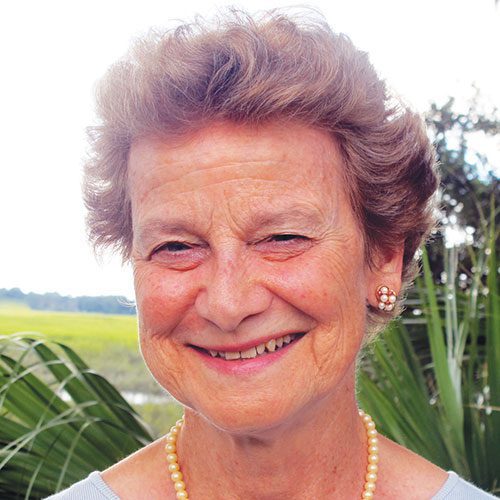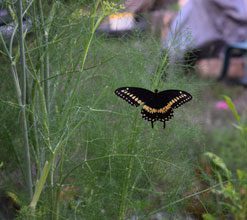“The longer I live, the more beautiful life becomes.” – Frank Lloyd Wright
At times, life itsownself can seem a puzzle. Especially if you listen to the daily news, the negative conditions of our planet and man’s inhumanity to man may seem completely overwhelming and unsolvable. But the above words from a creative soul and esteemed architect reflect hope in a world that can often appear to have lost its grasp of beauty, to have embraced the worst traits of mankind, and to have pledged allegiance to the dark side.
The South Carolina Lowcountry is one of the loveliest places I’ve lived. Fifteen years ago, I knew I’d found home when a mantra appeared in my head: “I love the Lowcountry; it beckons me back.” So I packed my Kentucky bags, moved here, and never looked back. Since then, even on days when this Pollyanna hits a low point, all I have to do is glance at those magnificent live oaks bedecked with Spanish moss, be mesmerized by southern sun painting diamonds on the water, watch a Great blue heron standing stilt like at river’s edge fishing for supper, or be greeted with a “Hey, how y’all doin’?” from a friendly stranger, and I immediately think but look where I live. And my serotonin levels perk right up.
What gives me hope without exception is spending time in nature. A stroll on the Spanish Moss Trail reveals ibis, wood storks, osprey, egrets, herons, laughing gulls, and the occasional roseate spoonbill hanging out in the trail’s gorgeous woods and waters. While scrunching my toes in the sand at Hunting Island, flocks of sandpipers scuttle amid the breakers rolling in as cadres of pelicans skim the ocean’s waves.
Often, locals head to Bay Street Bluff and spread a blanket for a picnic, set up colorful beach seats for a moved-outdoors meeting, unfold easels for a sketching session, or strategically place white-ribbon-bedecked churchlike chairs for a wedding. Sometimes, simply slouching into a canvas deck chair to gaze upon the river, boats of all sorts and conditions, clouds morphing into puffy white animal shapes, and cars backed up to cross the Woods Bridge when its swing finally opens can reduce everyday worries back to doable size. Mother Nature knows her business.
To us humans, this business of life and creating a good one can seem complicated, even scary from time to time, especially as one ages. Frank Lloyd Wright’s observation is a good one to take to heart. Having inhabited this planet for a while, I concur with his premise. It’s easy to focus on an aging body and infirmities that can ensue. Bodies obviously change through the years and reflect wear and tear, which is the best reason to take good care of yours all along. Worrying about illness and injury can produce a great deal of stress, which can, of course, make matters worse. As can focusing on the unanswerable question, “How much time do I have left?” That can sure keep you up nights if you let it.
Though I don’t have a magic bullet to make everything hunky-dory, I do have several suggestions. Stop worrying so much about time and do your best to be as present as you can be a day at a time. A minute at a time, if necessary. Make yourself “be here now,” as contemporary spiritual teacher, psychologist, and writer Ram Dass prescribed in his classic ‘70s book of the same name. Regular meditation and deep breathing can certainly help, as can spending time with people – and animals! – you love and taking that aforementioned natural beauty “cure”.
I no longer believe in coincidence, but I do believe there’s flexible order to the Universe, that it can morph to accommodate a situation. Perhaps that’s a bit woo-woo but my experiences make that theory valid for me. As I was writing a few minutes ago, I looked up in time to see a lovely doe strolling down my driveway, followed by twin spotted fawns. Made me smile. Coincidence? I think not!
At any rate, worry doesn’t accomplish a thing. Taking a much-needed break can lighten your spirit and perhaps even provide you with a helpful hint to ease your situation.
As a child, I “signed up for” the job of trying to make everyone in my family happy, one that no person on earth could have accomplished, short of those involved, who at that point clung to their allotted “family roles.” But once a week, we all got a break because on Sundays, Daddy piled us into his 1956 forest green Chrysler – Mom, my sister Lindsay, me, and our dog Spotswood “Spotty” Diddle Brown – for a drive to Walnut Hill Farm, right outside Hopkinsville, Kentucky, for the entire afternoon.
Owned by my dad’s sister Madeline and her husband Mac, the property had been on the Cherokee tribe’s infamous Trail of Tears on their migration west to Oklahoma. A retired Navy captain who taught high school chemistry/physics until school officials made him retire from teaching at 80, Uncle Mac led Lindsay and me on magical journeys of discovery. We found arrowheads and Native American tools, collected empty locust shells and strung them into “jewelry,” and wrote postcards to slide into bottles and launch down Little River. On rainy days, he’d open his captain’s chest chock full of treasures, including a Magic 8-Ball that “told” fortunes, an elephant-shaped Chinese puzzle, green plastic “leaping” grasshopper, and a Slinky or two.
On those endless days, we’d exhaust ourselves with play. Spotty would always roll in something dead and stinky so the car windows stayed down on the way home. Lindsay would moo and neigh at farm animals in the fields as we passed. And the entire family would reset emotionally for a time. I remember that at least I did. The Sunday adventures led me out of worry and into the joy of delightful childhood afternoons, complete with evening sunsets, lightning bugs, and PB&J sandwiches. They restored my hope.
I’d guess you might have a few breath-of-fresh-air memories of your own. Revisit them. Believe in them, for those recollections are all about that glorious idea, hope. Shine the light of hope into your world and let it lift you into life’s possibilities.
“Hope” is the thing with feathers –
That perches in the soul –
And sings the tune without the words –
And never stops – at all –
– Emily Dickinson









